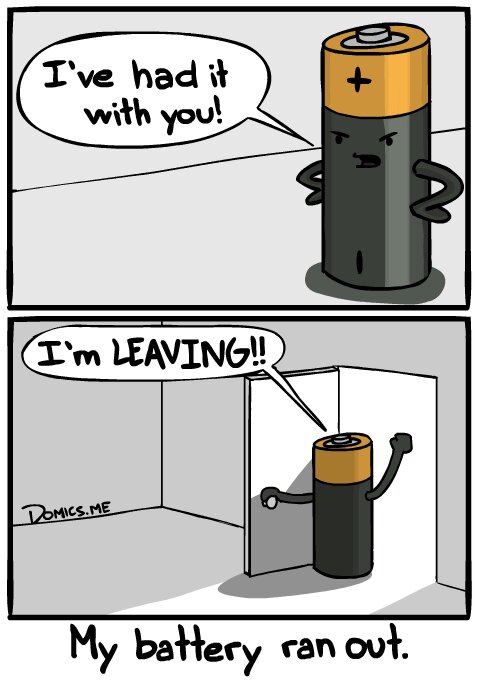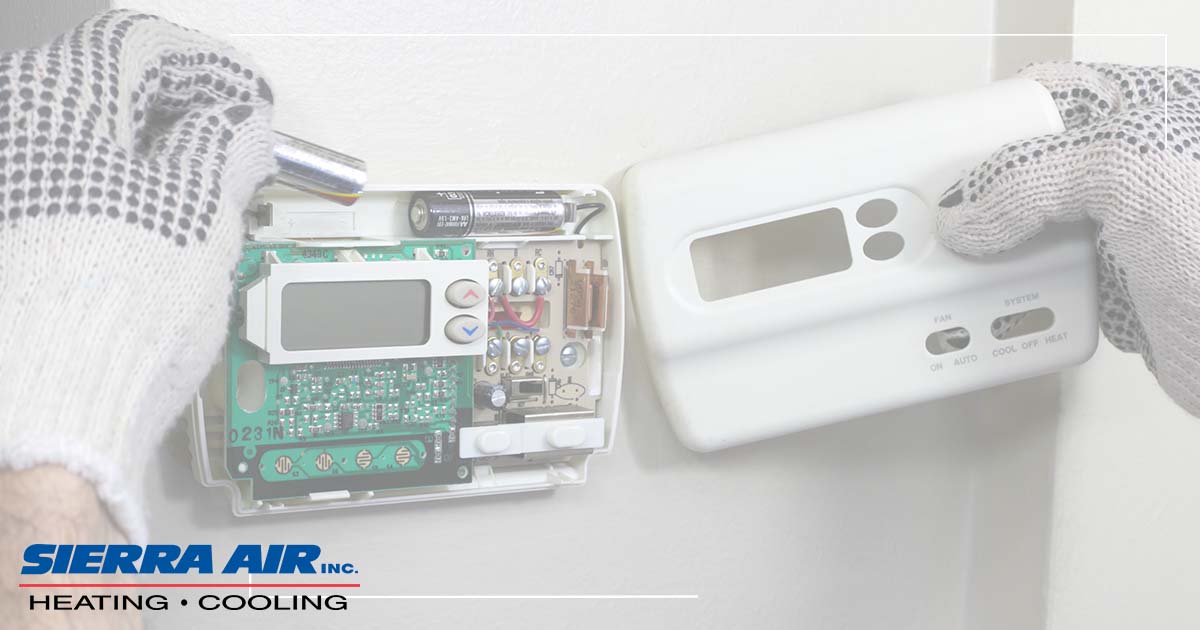If changing the batteries in your HVAC thermostat isn’t something you think about, it should be. This simple task takes mere minutes and usually doesn’t require any tools. In return, you gain the peace of mind that heating and cooling will work with the press of a button.
We’ll discuss how to tell when the thermostat batteries are low, what happens if you let them die, how frequently they should be changed, and how to change the batteries in three common HVAC thermostats.
How to Tell Thermostat Batteries are Low
While today’s HVAC thermostats are jam-packed with convenient features, each one relies on batteries to effectively talk back and forth with the system. When the batteries begin to drain beyond functional levels, you may see one or more of the following signs:
- An empty battery icon: Most thermostats provide up to a two-month notice before the batteries die. If yours shows an empty battery icon, it means the batteries have enough power to function for a little while, but not forever.
- Intermittent blank display screen: As the main power source behind the display, as the batteries begin to fail, the screen may begin to go blank then come back on.
- Misread the air temperature: Sensors inside the thermostat continually gauge how hot or cold the indoor air is. Without ample power from the batteries, the sensors are unable to judge and may cause the HVAC to not turn on or off as needed.
What Happens if My Thermostat Batteries Die?
Simply put, your HVAC system won’t work. You’ll see a blank thermostat display that doesn’t respond when pressing buttons or tapping the screen. If you have a smart thermostat, commands from a voice assistant or smartphone app are rendered moot. If it’s an extremely hot or cold day, you won’t have the comfort — and safety — provided by the system until the batteries are replaced.

How to Change a Wall Thermostat Battery
This style of thermostat is what comes to mind for people when talking about an HVAC thermostat.
- Remove the display housing from the wall-mounted plate.
- Turn the cover over to view the batteries.
- Use a small, flathead screwdriver or your fingers to remove the batteries from their slots.
- Align the new battery ends with the correct terminal in the slots and press into place.
- Realign the display housing posts with the wall-mounted plate and press the housing until it clicks in place.
How to Change a Honeywell Thermostat Battery
- Look on the top right of the thermostat for a push tab.
- Press the tab down until the battery compartment loosens, possibly slightly dislodging from the thermostat housing.
- Gently pull the battery compartment toward yourself and tip it so the existing batteries fall out.
- Align the new battery ends with the compartment markings and insert them into their slots.
- Gently slide the battery compartment bottom-first into the thermostat and press until it clicks securely in place.
How Often Should I Change the Batteries?
Ideally, the batteries should be changed as soon as you see a low battery indicator. Otherwise, most homeowners don’t have heating and cooling interruptions when changing the batteries once a year. But once a year should be the minimum, especially if the thermostat is hardwired and only uses batteries for backup power.

What Kind of Batteries Should I Use in the Thermostat?
If you’ve never changed the batteries in the thermostat, refer to what the user’s manual says. Make sure to buy and use batteries from a known brand and that are the correct voltage. Using batteries with an improper amperage will cause them to drain more quickly, thus having to change batteries more often. The most common batteries found in an HVAC thermostat are:
- One 9-volt battery
- One button-style 3-volt lithium battery
- Two AA batteries
- Two AAA batteries
Changing the batteries in your HVAC thermostat is easy to learn, usually doesn’t require more than a few minutes and maybe a small screwdriver to remove the existing batteries. But it’s a surefire way to enjoy a comfortable indoor climate all year long.
If your HVAC thermostat isn’t working correctly, or you have other issues with the system, schedule an appointment with Sierra Air Inc. today.




